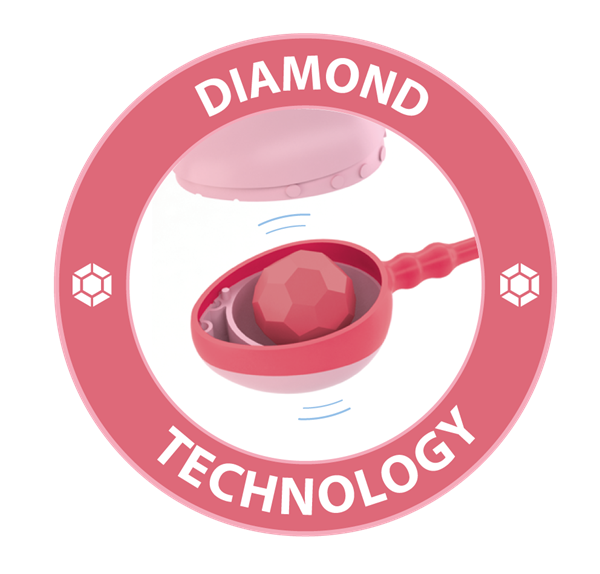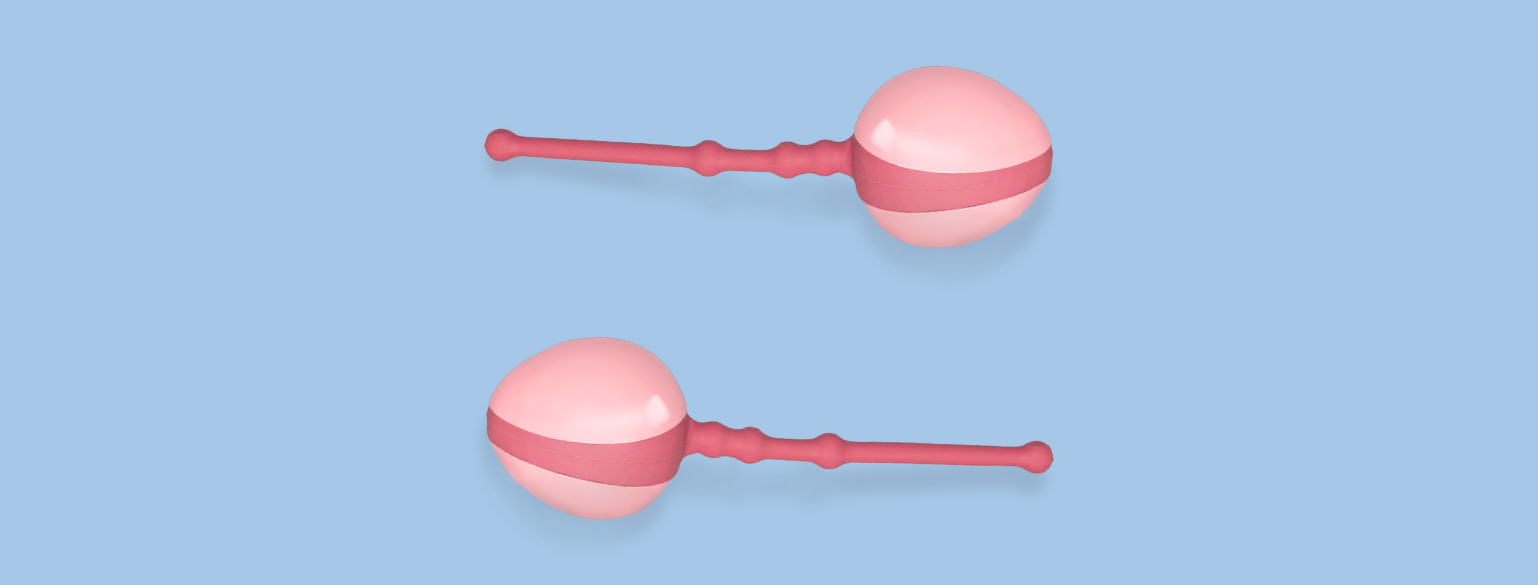Evidence supporting Enna Pelvic Ball
Do vaginal cones and vaginal balls strengthen the pelvic floor muscles and help to overcome incontinence?
Vaginal cone therapy is a successful method to cure mild female stress incontinence and has the advantage of avoiding incontinence operation. Of eighteen women with cone therapy, eight were continent after 6 weeks and showed a significant increase of the dynamic urethral closure pressure.
Seven patients reported a subjective improvement.
Eur J Obstet Gynecol Reprod Biol. 1995 Oct;62(2):213-5. Conservative therapy of female genuine stress incontinence with vaginal cones. Dellas A, Drewe J.
[Vaginal cones led to] significant improvement with reduction in urine loss and increase in pelvic muscle tone in women that completed the whole treatment course .
Acta Med Port. 2005 Mar-Apr;18(2):117-22. Epub 2005 Apr 28. Pelvic floor muscle training with Plevnik's cones in women with urinary incontinence. Belo J, Francisco E, Leite H, Catarino A.
53% in the group assigned to pelvic floor exercises and 57% into the group assigned to cones[..] considered themselves as cured or improved to a significant degree. Pelvic floor exercises and cones are equally effective in the treatment of genuine stress incontinence. Cones are cost and time saving.
Eur J Obstet Gynecol Reprod Biol. 1998 Mar;77(1):89-93. Pelvic floor exercises versus vaginal weight cones in genuine stress incontinence. Cammu H, Van Nylen M.
There was a subjective improvement in 23 of the 34 women (68%) after 6 weeks of cone use with 16 (47%) deciding that no additional treatment other than cone therapy was required at this time. Statistical analyses showed that there were significant improvements in the objective indices. There were no side-effects observed with cone use. When followed up 12-24 (mean 15.8) months from the start of the study, 14 women (41%) were still improved with either cone or pelvic floor exercises. Vaginal cones would seem to be a simple and practical means of improving both pelvic floor strength and genuine stress incontinence.
Aust N Z J Obstet Gynaecol. 1990 May;30(2):157-60. Vaginal cones for the treatment of genuine stress incontinence. Wilson PD, Borland M.
Of the 30 women who completed 1 month of the exercises 70% felt they were improved or cured and 90% found it an acceptable method of treatment. Of the 30 women only 11 (37%) opted for surgery after training. There was a highly significant correlation (P less than 0.001, rs = -0.21) between decreased urine loss and increase in retained cone weight.
Br J Obstet Gynaecol. 1988 Oct;95(10):1049-53.Vaginal cones: a conservative method of treating genuine stress incontinence. Peattie AB , Plevnik S, Stanton SL.
In a pilot study 6 women with stress urinary incontinence were treated with Geisha balls while performing pelvic floor muscle exercises at home half an hour a day for 12 weeks. Subjectively 4 patients were cured and 2 had improved. Before the treatment the 24-hour pad test was a mean 48 g and after the treatment a mean 10 g. There were no adverse effects.
Int Urogynecol J Pelvic Floor Dysfunct. 2001;12(4):223-4; discussion 224-5. Conservative treatment of stress incontinence with Geisha balls. Glavind K.
The reduction of urinary leakage after four months of exercise in the training group with vaginal balls was significantly better (P < 0.03) than the results in the group training with pelvic floor muscle exercises alone. The study found the weighted vaginal balls to be a good alternative for training pelvic floor muscles in women with stress urinary incontinence. Neurourol Urodyn. 2001;20(5):591-9. Effectiveness of two conservative modes of physical therapy in women with urinary stress incontinence. Arvonen T, Fianu-Jonasson A, Tyni-Lenné R.
Weighted vaginal cones are better than no active treatment in women with stress urinary incontinence.
Herbison P, Mantle J, Dean N. Weighted vaginal cones for urinary incontinence. Cochrane Database of Systematic Reviews 2002, Issue 1
..a study in which two such devices -- vaginal cones and pressure biofeedback -- were compared with pelvic floor exercises alone. The results show that there is no statistically significant difference between the three modalities; all treatments produced significant improvement in symptoms and quality of life scores.
Br J Community Nurs. 2001 May;6(5):230-7. Pelvic floor reeducation for stress incontinence: comparing three methods. Laycock J, Brown J, Cusack C, Green S, Jerwood D, Mann K, McLachlan Z, Schofield A.
It is concluded that vaginal cone therapy is one physical treatment option for stress incontinence but is of no clinical effect for those with severe incontinence.
Int Urogynecol J Pelvic Floor Dysfunct. 1997;8(5):314-7. Clinical value of vaginal cones for the management of female stress incontinence. Kato K, Kondo A.
All round improvement in incontinence levels, sexual function and quality of life. J Sex Med 2010. Feb 2. Sexual function and quality of life in women with urinary incontinence treated by a complete pelvic floor rehabilitation program (biofeedback, functional electrical stimulation, pelvic floor exercises and vaginal cones)
Rivalta M and others.





